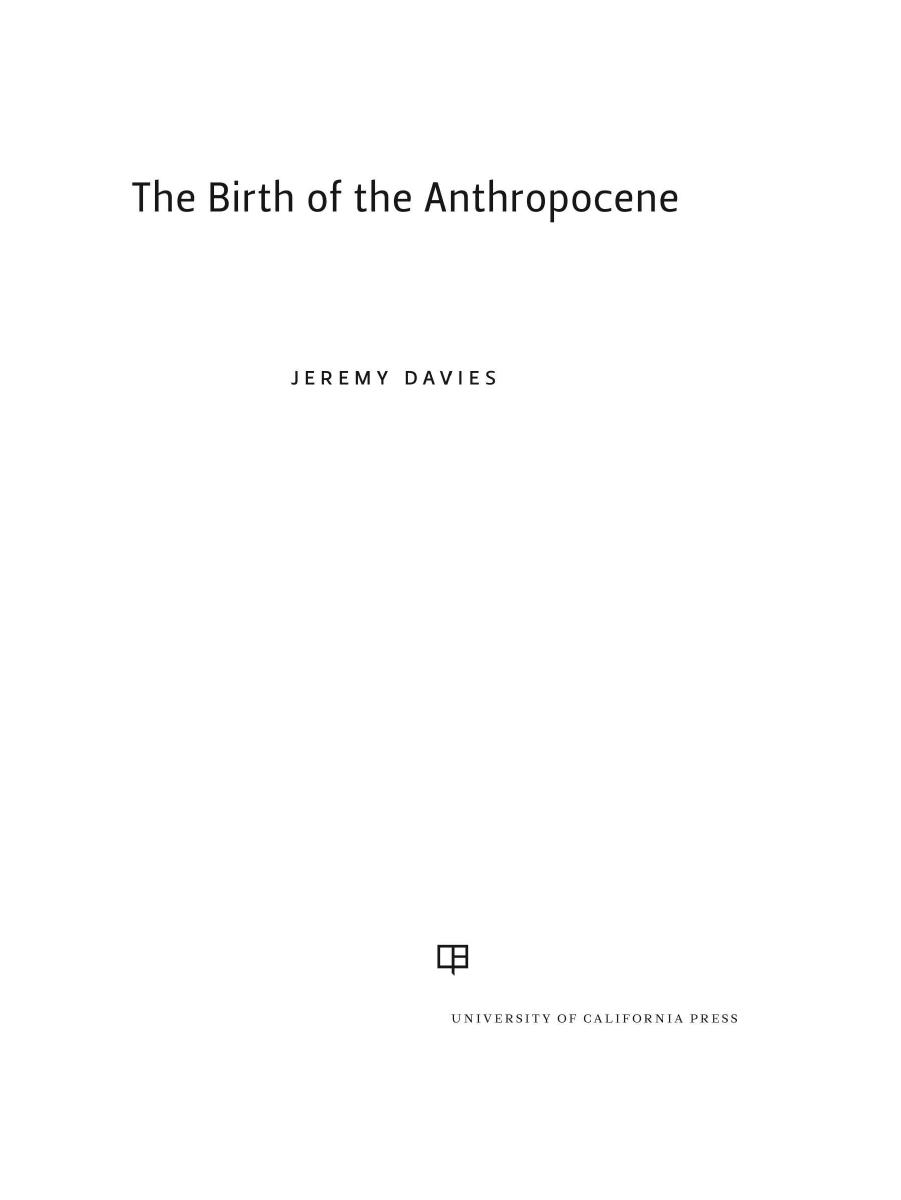The Birth of the Anthropocene by Jeremy Davies

Author:Jeremy Davies
Language: eng
Format: epub, pdf
ISBN: 9780520289970
Publisher: University of California Press
Map 1. Pangaea before the Great Dying, showing landmasses and the principal ocean currents.
Highly oxygenated air (perhaps up to 35 percent, against 21 percent today) made it possible for such giant insects to breathe, and atmospheric carbon levels fell again—locked away in the coal—for a long stretch in the middle of the interval. That CO2 decline produced a generally chillier world that saw the largest of all the Phanerozoic’s glacial episodes. This did not mean another major extinction pulse, however, just a prolonged period in which the emergence of new species was much slowed down, before warmer, drier, and less oxygenated conditions returned. But a third great extinction did finally come, the first blow landing 260 million years ago, and the follow-up—the so-called Great Dying, the most dizzying horror yet faced by life on earth—8 million years later. Together, they destroyed 96 percent of all living species.
The magnitude of this third mass extinction, the Permian event, is reflected in the structure of the geological timescale. The Phanerozoic eon is split into three eras. Up to now we have been in the Paleozoic era, that of “old life.” The Permian crisis is the dividing line between the 289 million years of the Paleozoic and the 186 million years of the Mesozoic (“middle life”) that followed.
The sheer scale of the Permian disaster makes it hard to explain, but the key was probably a volcanic outpouring in Pangaea’s northern province, Siberia, that covered an area twice the size of Mexico in a layer of basalt up to three kilometers thick. Two or three million cubic kilometers of lava emerged in little more than half a million years, emitting carbon dioxide, sulfates, and chlorine. The lava rose to the surface through beds full of coal and hydrocarbon gases, which it turned to smoke. This Siberian Ragnarok may in turn have raised temperatures enough to destabilize the measureless reservoirs of methane, formed by bacteria-like archaean microorganisms, that exist in a frozen, highly pressurized state beneath ocean floors; the methane would have bubbled to the surface and sent temperatures still higher. The accumulating gases apparently produced rain so acidic that it reduced plant life to decomposing heaps, letting soil erode down to the bedrock. Dead organic matter would have piled up around the whole supercontinent’s coast, thereby contributing to the gravest crisis of all, as the oceans themselves grew acidic and deoxygenated. This last calamity was begun by the rising CO2; it then fed on itself as ever more things died and rotted and as Panthalassa’s waters stratified into lethally anoxic horizontal bands.
The bombed-out landscapes of Pangaea that were left after the Permian event were dominated for millions of years by a few diminutive species. In place of the highly regionalized flora and fauna that preceded the catastrophe, there was Lystrosaurus, a stocky, flat-faced burrowing reptile whose population exploded in the absence of predators and in the presence of plenty of ferns to feed on. A couple of thin-shelled bivalve mollusks similarly monopolized the oceans. Most telling of all is the return of the stromatolites and thrombolites.
Download
The Birth of the Anthropocene by Jeremy Davies.pdf
This site does not store any files on its server. We only index and link to content provided by other sites. Please contact the content providers to delete copyright contents if any and email us, we'll remove relevant links or contents immediately.
Man-made Catastrophes and Risk Information Concealment by Dmitry Chernov & Didier Sornette(5645)
The Revenge of Geography: What the Map Tells Us About Coming Conflicts and the Battle Against Fate by Kaplan Robert D(3960)
Zero Waste Home by Bea Johnson(3652)
In a Sunburned Country by Bill Bryson(3364)
COSMOS by Carl Sagan(3346)
Good by S. Walden(3344)
The Fate of Rome: Climate, Disease, and the End of an Empire (The Princeton History of the Ancient World) by Kyle Harper(2869)
Camino Island by John Grisham(2718)
A Wilder Time by William E. Glassley(2687)
Organic Mushroom Farming and Mycoremediation by Tradd Cotter(2563)
The Ogre by Doug Scott(2501)
Human Dynamics Research in Smart and Connected Communities by Shih-Lung Shaw & Daniel Sui(2431)
Energy Myths and Realities by Vaclav Smil(2379)
The Traveler's Gift by Andy Andrews(2297)
9781803241661-PYTHON FOR ARCGIS PRO by Unknown(2268)
Inside the Middle East by Avi Melamed(2230)
Birds of New Guinea by Pratt Thane K.; Beehler Bruce M.; Anderton John C(2175)
A History of Warfare by John Keegan(2101)
Ultimate Navigation Manual by Lyle Brotherton(2048)
